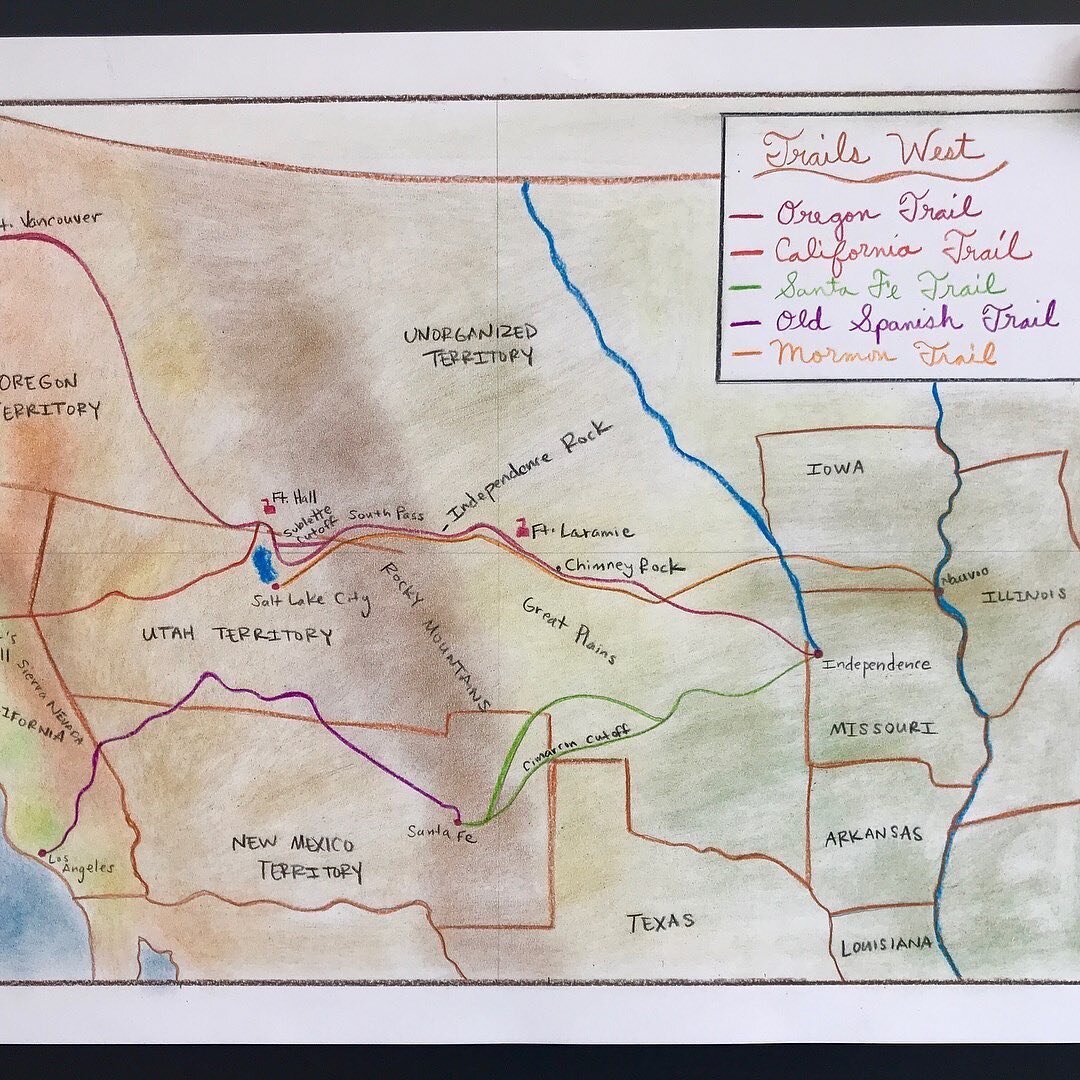Seventh Grade
The process began in grade six of observing the world continues, but now students begin to question the authenticity of everything around them. Is this teacher or parent or friend and their information and experience real, true, right? The implications of events and developments within themselves, and in the outer events of history becomes apparent to them.
They are, in short, at the perfect stage for lessons about the Renaissance, the Reformation, the Age of Exploration, algebra, and scientific inquiry. The old order based on faith and authority is giving way, with much tumult and change, to a new order based on objectivity, daring, and personal responsibility. The students study the lives of those thinkers and explorers who dared to think "out of the box," and through their experiences, the lessons of seventh grade come alive. The stories of explorers show people defying conventional understanding to step into the unknown. During the Christian Reformation, the idea that there can be an individual spiritual life for which one is personally responsible was born.
Language Arts
With the students’ growing independence and originality, it’s time to introduce creative writing as a formal inquiry into our English studies along with the continued study of grammar and composition. The class has the opportunity to write narrative stories and explores the elements that make a great short story. In poetry, we employ meter, simile, and metaphor informal structures. Writing assignments stress the subjunctive mood, direct speech, and the use of tense to describe a complex series of events. The power of the students' own expression is developed through concentration on poetry and imagery and clear accurate writing in exposition.
Mathematics
We’ve worked to make the children feel at home in their bodies and on the earth, and our students spend the Nutrition block learning specifically about their own bodies and organs. But in grade seven, new energy begins to manifest: the ability to think abstractly. How do we nurture that ability? With the introduction of algebra, the students are led into abstract mathematical thinking. They work with unknown quantities as if they are numbers, learn to balance equations and solve for the variable. They enter the realm of positive and negative integers, formulae, binomials and inverse operations, coefficients and irrational numbers. Pythagoras was shaken when he contemplated a quantity such as the square root of a negative number. What are we to think of a number that cannot physically exist?
Sciences
Physics gives practical lessons in the six simple machines and the work they do in the world. The students look around them and see levers at work everywhere and learn to calculate the advantages of the inclined plane, a pulley system. They embark on the science of putting the laws of the physical world to work for them. The challenge of creating a simple, elegant machine to feed the dog or to open the door by remote action appeals to them.
In chemistry, the students get a glimpse right into the substances around and within them. What is happening in the transformations we call combustion, which apply as much to our physiologies as to a flame on a candle? Beginning with an apparently simple observation, the students explore the characteristics of oxygen, carbon dioxide, and hydrogen. In simple demonstrations, students learn that combustion isolates acid from alkali. After building a lime kiln and driving carbon dioxide out of a piece of marble or limestone, the class explores the making of cement and the formation of mineral salts when they are persuaded to reunite. What does the process have to do with, say, the pH balance of the ocean? Ask a seventh-grader!
The students discover the processes at work within their own bodies. In biology, the class draws and discusses the digestive, respiratory, circulatory, and reproductive systems in detail. We examine the importance of proper nutrition. We come to understand the developmental and physical changes of puberty. The class studies some physical organs, such as the eye and its relationship to light, and the ear with its incredible affinity to music.
By the end of seventh grade, the class will have studied both Asia and the continent of Africa. Usually, this is the year our geography classes explore the animals and peoples of the Rift Valley, the habitats and climates of the Kalahari Desert, how humans have adapted, culturally, socially, and politically to the particular surroundings in which they live.
History
The Renaissance, the Reformation, the Age of Exploration, as well as the cultural anthropology of Africa and Europe are all studied in seventh grade. Biographies of Kepler, Galileo, and Copernicus and Martin Luther, Columbus, and Pizarro highlight the conflict that can occur when new ideas come up against entrenched world-views. In one year, we examine the shift from a geocentric to a heliocentric view of the solar system and the chaotic meshing of previously isolated social cultures.
Movement
Collaboration, creativity, and self-expression is developed in middle school through circus arts. The children learn skills in coordination, juggling, and riding a unicycle, working together on the annual production of a circus provides vital and unique lessons and opportunities for our middle school students as they explore the inner and outer mechanics of putting a great show together, from blending the storylines of each act into the narrative story of the circus, to working together to rehearse and perform group gymnastic formations that involve the whole middle school cast.
Handwork
Coordinated movement of the hands and limbs is essential to the development of the intellect and academic capacities, as well as physical integration of the child’s maturing body. For this reason, Handwork is taught in all grades, beginning even in Early Childhood. Handwork teaches children to complete challenging tasks and to appreciate each other’s work. Mathematical concepts such as parallelism, mirror-imaging, progression and geometric forms are experienced through this tactile learning experience. The aesthetic experience of creating something beautiful also nourishes and refines the child’s emotional well-being. Seventh graders often continue their work with three dimensional items and create fabric boxes, as well as sew slippers or shoes.
World Languages
Students in Seventh grade continue their studies of German and Spanish, which each meet twice per week throughout the school year. These languages are taught mostly in the native tongue to familiarize students with the sound and cadence of the particular language and use games, stories, guided drawings, song and movement to engage students with the language.
Art
Art is part of every class, every day and the aesthetic focus of all subjects is a hallmark of Waldorf education. In Seventh grade the study of Renaissance art presents a new way of representing the world that is objective, natural, and geometric and sacrifices nothing of its artistic beauty. The students learn perspective drawing, with its vanishing point, an artificial construct that suddenly enables them to create more realistic drawings. They discover the proportion of the Golden Mean from their geometry lessons appearing in the composition of Renaissance paintings and buildings and use it in their own drawings of the human figure.




